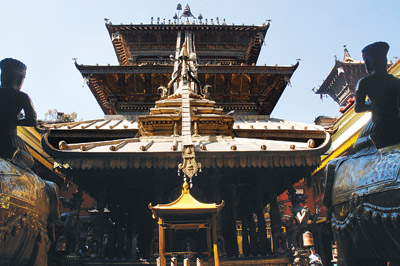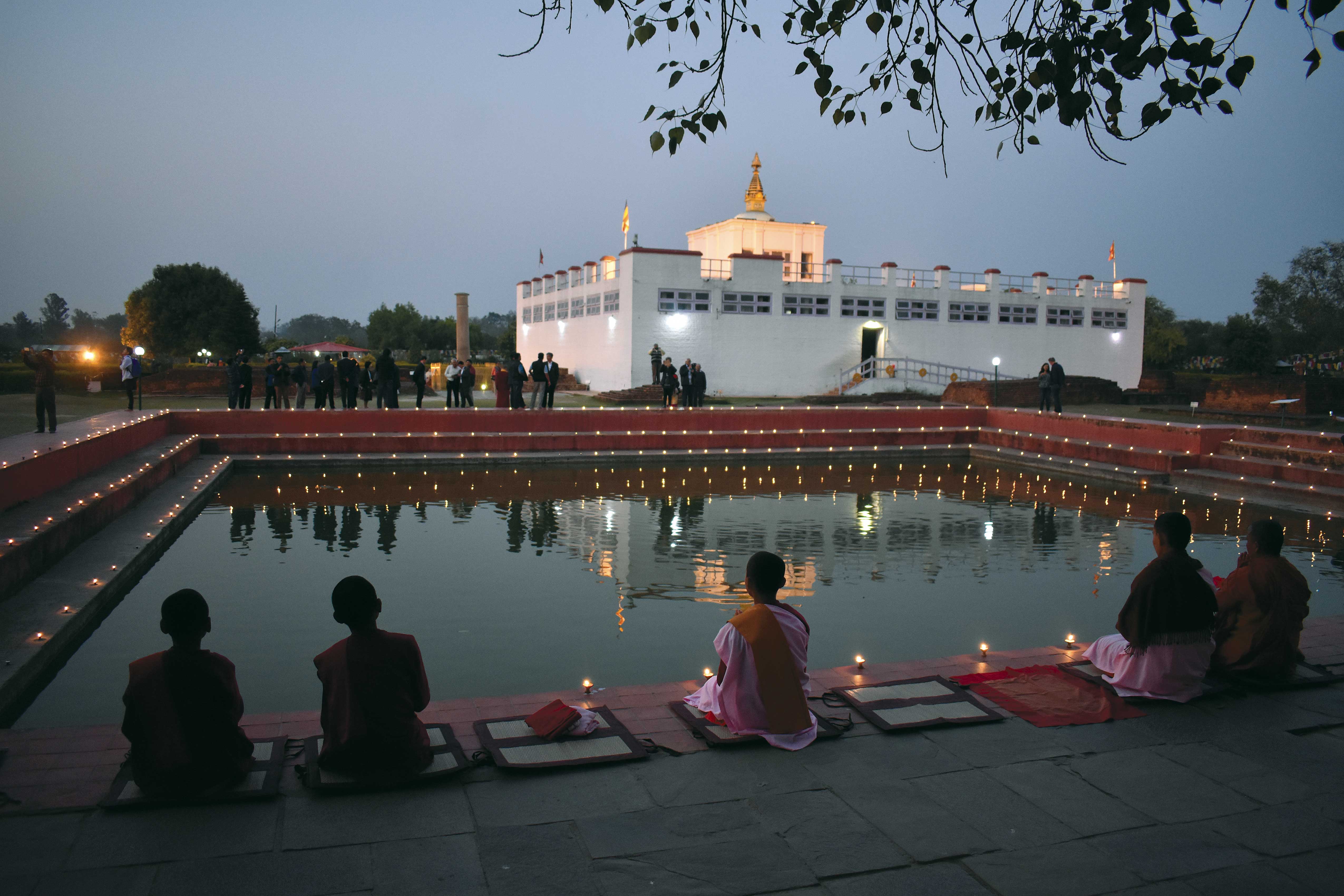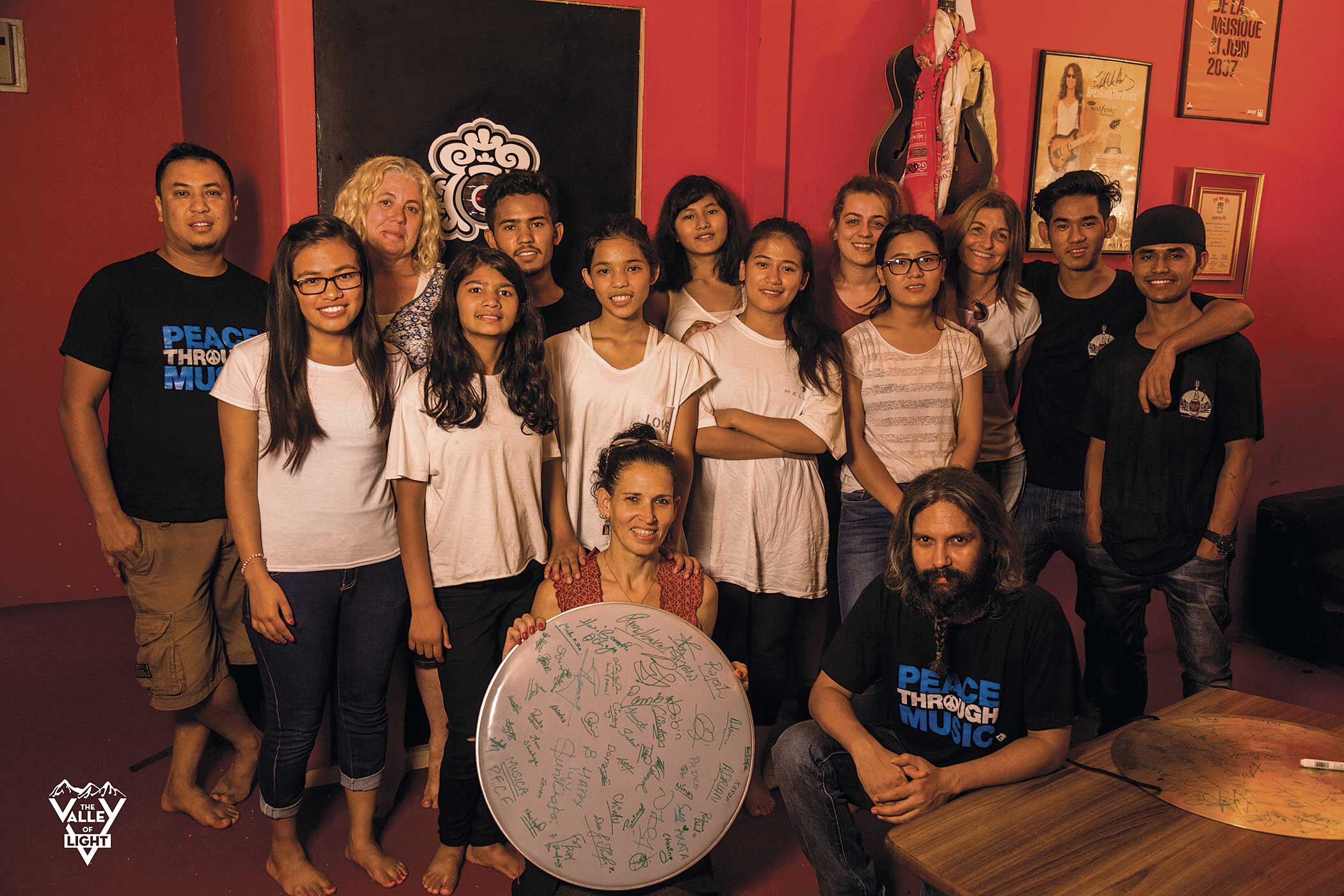The Buddhist monastery Kwa Baha popularly known as ‘Golden Temple’ is currently undergoing a major renovation. The whole complex is a very popular site for pilgrims, visitors and tourists and is going to get a well-deserved facelift. The baha is really significant because it houses both the tangible and intangible heritage of Buddhism. In preserving the built heritage we must ensure that everything is kept authentic, and also make sure that our intangible heritage – the rituals, the books, records, the practices and the values of the members of the community are all kept authentic.
In his book ‘Folklore Series’, Kesar Lall relates the history and origin of this amazing monument. As the story goes, Pingala, the Queen of Marward was unhappy when the king took on a second queen and decided to go on a pilgrimage to the Kathmandu valley with a statue of Shakyamuni Buddha, which she worshipped. She meditated at Swa yambhu, then at the Kimdole vihar and finally with the permission of the ruler built a vihar in present day Bishalnagar at Pingalkot and named it Pin baha. Many years later, the vihara was dilapidated and a priest took it to Patan. The then ruler Bhasker Deva Verma, it is said, had the statue installed at the current site and a sangha established in the Kwatha which is old Newari for fort. Hence the baha today is known as Kwa baha or formally called Bhasker Deva Samkarita Hiranyabarna Mahavihara.
yambhu, then at the Kimdole vihar and finally with the permission of the ruler built a vihar in present day Bishalnagar at Pingalkot and named it Pin baha. Many years later, the vihara was dilapidated and a priest took it to Patan. The then ruler Bhasker Deva Verma, it is said, had the statue installed at the current site and a sangha established in the Kwatha which is old Newari for fort. Hence the baha today is known as Kwa baha or formally called Bhasker Deva Samkarita Hiranyabarna Mahavihara.
Different sources put the year of the founding of the baha somewhere in the early part of the 11th century. This means the baha is about one thousand years old and what a great occasion to see it being restored for the next one thousand years. For those who would like to learn more about the Baha and what it consists of, there are two books in the market that are a heritage in themselves. The first is a book by Fr. John K. Lock S.J. titled Buddhist Monasteries of Nepal. The second is by Mr. David N. Gellner titled Monk, Householder and Tantric Priest. Both are well-written documentations of the history, physical assets and rituals and practices of Kwa Baha.
Fr. John Locke describes Kwa baha as one of “the most famous of the Patan’s bahas. It has by far the largest sangha of any baha in the valley and the members of the sangha are perhaps the most active Buddhists in the valley. The complex is also the most lavishly decorated of any of the bahas due to the large number of members of the sangha and the fact that many of these were wealthy traders in Tibet who used their wealth to decorate and maintain their baha.” According to David Gellner, “Only in the Kathmandu valley can one still find Mahayana Buddhism within a South Asian cultural environment.” The Golden Temple of Patan is the perfect location to observe and learn, and perhaps the ideal place to start preserving its authenticity.











